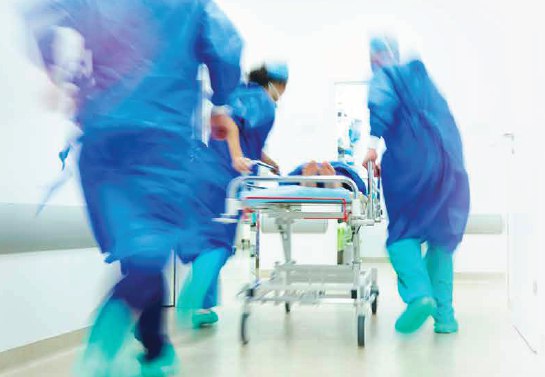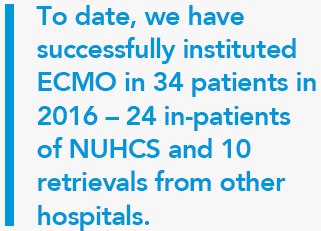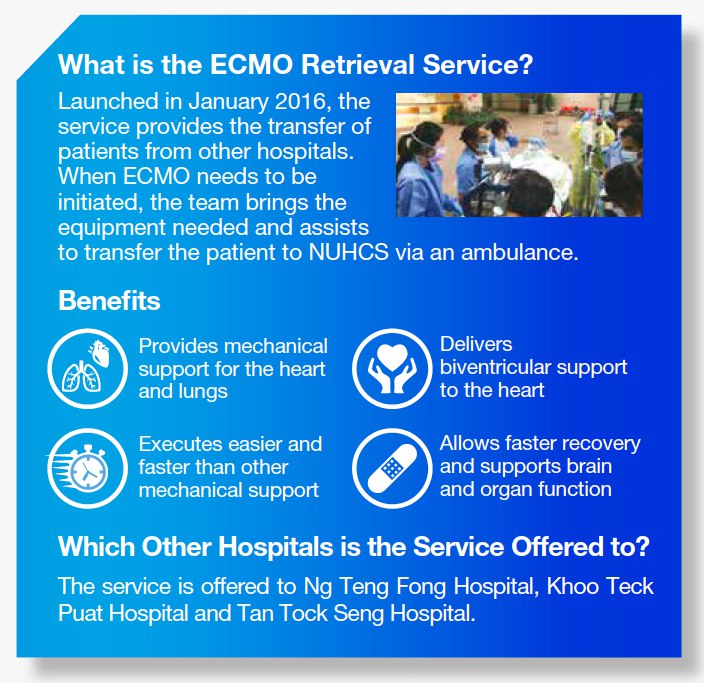
Temporary Life Support for the Heart and Lungs
National University Heart Centre, Singapore’s (NUHCS) Extracorporeal Membrane Oxygenation (ECMO) Retrieval Service was created to help patients from other hospitals that do not offer ECMO.
One such patient is 44-year-old Mr. Seet Seng Khoon, who was able to receive continuous ECMO support after he was transferred to NUHCS by the ECMO Retrieval Team.
Background of ECMO Retrieval Service

When a heart patient’s condition deteriorates, he or she may require ECMO support before and after surgery. To assist such a patient, NUHCS established the ECMO Retrieval Service in 2000 and extended it to other institutions by forming the ECMO Retrieval Team in 2016.
The team comprises Dr. Winn Maung M Aye (Director of Surgical ECMO Services), Dr. Hardip Singh, Dr. Ooi Oon Cheong, Dr. Harish Muthiah, Dr. Senthil Subbian and Dr. Darren Lee. One team member is scheduled to be on-call daily and he or she is tasked to gather the team and respond to all requests for the initiation of ECMO within and outside NUHCS.
A Patient’s ECMO Journey to NUHCS
Mr. Seet was one of the patients who benefited from the ECMO Retrieval Service. He was admitted to Tan Tock Seng Hospital (TTSH) in October 2016 when he suddenly experienced breathing difficulties. His condition deteriorated rapidly within a few days and his respiratory status progressively worsened. He was then intubated and ventilated. However, his condition continued to worsen, requiring increasing ventilatory support. Despite this support, his respiratory status could not be optimised. Thus, the decision was made to support him on ECMO.
Mr. Seet was subsequently transferred to NUHCS on ECMO support for further management. He was kept on Veno-Veno1 ECMO support to allow his lungs to recover and optimise respiratory status during the course of ECMO support.
“Although it was really emotionally disturbing to see my brother being connected to a machine, it really saved his life!” said his sister, Ms. Cecillia Seet.
A possible complication during an ECMO is bleeding from any part of the body. He developed colonic bleeding, which required multiple interventions by the Colorectal Surgical teams on several occasions. The anticoagulant2, heparin infusion, was turned off due to colonic bleeding. Running ECMO circuit without heparin infusion has a high tendency to form clots within the circuit, which can be fatal. He also underwent multiple endoscopic interventions by the Colorectal Surgical team.
The Road to Recovery
During the ECMO support, Mr. Seet’s condition began to stabilise and gradually started to improve.
He underwent tracheostomy in preparation of weaning off the ECMO support. It was gradually weaned down and on his 42nd day of ECMO support, he was able to come off from Veno-Veno ECMO support.
He remained stable and his respiratory status gradually improved on conventional ventilatory support via tracheostomy. He was finally weaned off the ventilator. The tracheostomy tube was also removed during his recovery period.
Mr. Seet underwent rehabilitation in Senja Hospital and was regularly reviewed by the multidisplinary team in NUHCS’s outpatient clinic.
He was at last discharged from the hospital and was transferred to Senja Hospital for convalescence 122 days after discontinuation of Veno-Veno ECMO Support.
Eventually, he recovered completely and was discharged home two months after rehabilitation in Senja Hospital. Ms. Seet complimented the medical team and was touched by their concern during the most trying times.

1 Blood is removed from the venous side and then pumped back into it.
2 A substance that prevents blood from changing to a solid or semi-solid state.
